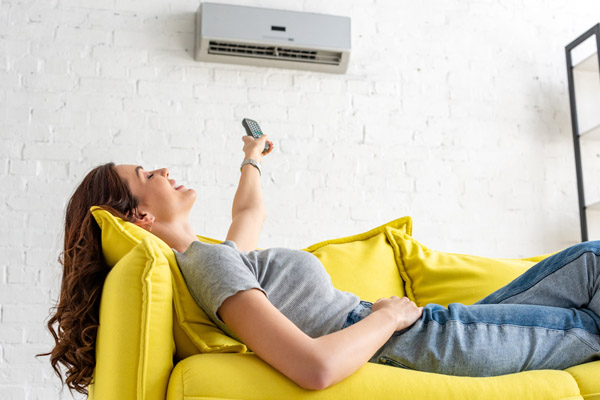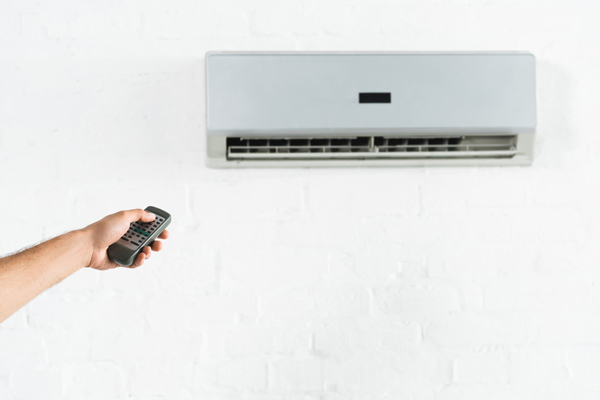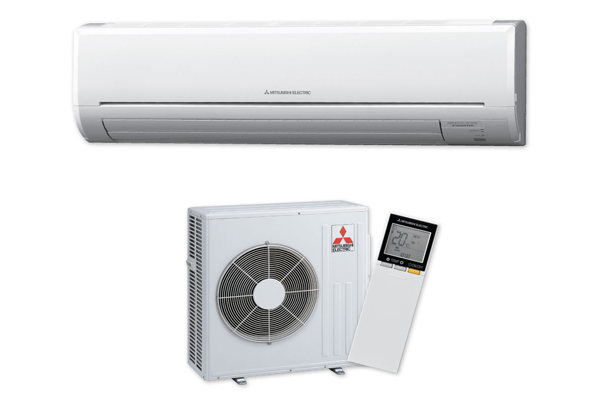
Once you have decided to install a ductless HVAC system in your home, you will need to determine if you want a single-zone vs multi-zone ductless system. PFO Heating & Air Conditioning has the information you need to make the best decision for your household. First, you must understand what zoning means and be able to recognize the difference between the two types of ductless systems.
Zoned Heating And Cooling: What Does It Mean?
Contents
When you have a zoned HVAC system, you will be able to control the temperature in particular areas of your home. Central HVAC systems allow for temperature control within an entire structure. However, a zoned ductless system will let you set varying temperatures in separate rooms or areas. Zoned heating and cooling puts the control in your hands.
Why Should You Choose A Zoned HVAC System?
When you install a ductless system, you can expect:
- Precise Temperature Control: Ductless HVACs allow you to cool or heat any room by using the thermostat and a remote control system. The most advanced systems are controllable using a mobile device such as your smartphone or tablet. This makes it easy to control your home heating and cooling from any location.
- Customized Comfort: A ductless heating and cooling system lets your family customize for individual comfort. Thermostats in different areas of the home can be set for the preferences and needs of individuals in those areas. With a ductless system, there is no need to argue over which temperature the thermostat is set on because the temperatures can vary according to the zones.
- Cost-Efficiency: When at full capacity, the ductless mini-split system uses less energy than central heating and cooling. A ductless system has high EER, HSPF, and SEER ratings. Ductless systems do not have the problem of duct leaks, which are one of the most common reasons for energy loss in forced-air HVAC systems. Your home will be much more cost and energy-efficient.
- Compact And Versatile Design: Ductwork is not necessary when you have a ductless HVAC system. This equipment is smaller and less intrusive than standard systems.

Single-Zone And Multi-Zone Ductless HVAC Systems
Single-Zone Ductless Systems
When you use a single-zone system, you have one indoor air handler and one compressor outside your home to control the temperature in one room or area of your home. A portable air conditioner, such as a window air conditioner, can accomplish this. However, the ductless system is more efficient, offers better performance, and saves more on energy costs than a portable unit.
If you are adding a room to your home, a single-zone system is the most convenient way to heat and cool it. If you are converting an uninhabited area into a habitable room, such as an attic, a single-zone system is a smart choice. Single-zone systems are also a good option when you are replacing your older HVAC system.
If you have a home or room in which ductwork cannot be installed, this ductless system is a good option. When it comes to installing a new system, ductwork is not always an option. Adding extra ductwork adds extra costs, and the design of older homes may make ductwork installation impractical or even impossible. An energy-efficient single-zone system heats and cools as well as a central HVAC system and offers benefits traditional systems lack. Ductless systems are free of many of the problems encountered with ducted heating and cooling systems.
Multi-Zone Ductless Systems
A multi-zone ductless system connects several indoor units to one outdoor compressor. The number of required indoor units will depend on how many rooms or areas you are heating or cooling. One outdoor compressor can handle as many as eight indoor units.
Multi-zone heating and cooling is the best option when you have a home that has more than one floor. It also an excellent option when it is not possible to install ductwork, or when your ductwork system is unable to heat or cool all of the necessary areas in your home. When you have several areas to heat or cool, choosing a multi-zone system makes the most sense.
Many families encounter the problem of warm and cold zones in their homes. Individuals may prefer different temperature levels. When a home has one central system, the individual comfort problem can mean arguments over control of the thermostat. A multi-zone ductless HVAC system is the perfect answer for those with differing comfort levels. With the ability to control temperatures in different areas of the home, nobody has to feel uncomfortable because temperatures can be set to accommodate individual preferences. When rooms are empty, the system in those areas can be turned off without affecting the temperature of other areas of the home. This is good for energy-efficiency and saves money on utility costs. A multi-zone ductless system keeps all household members comfortable without breaking the household budget.
The Difference Between Single-Zone And Multi-Zone Mini-Split Systems
We have already covered the most obvious difference between single-zone and multi-zone systems, but there are other differences as well:
- Price: Obviously, a single-zone ductless system has lower ductless installation costs than a multi-zone system. There are fewer units involved which means lower cost for components and time spent performing the installation. A multi-zone system will cost more to install, but there are instances when a multi-zone system is a more practical choice.
- The Number Of Components: One single-zone system has three major components. These include one outdoor unit, one inside unit, and the refrigerant set line. A multi-zone system requires more components. The exact number will depend on how many zones you wish to set up. Each zone uses a combination of the three components.
Choosing Outdoor And Indoor Units For Your Ductless System
When you know everything you need to know about single and multi-zone ductless systems, you have one more choice to make. You will need to choose between the different kinds of outdoor and indoor units that are available today. When you know all of your options, you can make the best decision for the comfort of your home and your budget.
The outdoor component of the ductless system is called the condenser or the compressor unit. The capacity of each will differ, but they all have a similar appearance.
Unlike outdoor units, the units inside your home can have different characteristics and capabilities. Some designs are hidden, and others are easier on the budget. There are different styles from which to choose.
Indoor Air Handler Styles:
Following are your choices for indoor units:
- A Wall-Mounted Unit: The most popular indoor unit is mounted on a wall. Although it can be seen easily, it is not large, and most find its appearance acceptable. Of all the indoor ductless units, this offers the simplest installation and the lowest costs.
- A Horizontal-Ducted Unit: The horizontal unit is the most unobtrusive unit. This is installed above the ceiling. It sends warm or cool air into different zoned areas through hidden ducts. The horizontal-ducted unit is easily concealed. All your family and visitors will see are the grilles installed in each room.
- A Ceiling Cassette Indoor Air Handler: This unit can move warmed or cooled air in all directions at once. It is a good option for larger-sized homes with an open floor plan. However, the ceiling cassette is a durable unit, and it will work just as well in smaller rooms or areas.
- A Floor Mounted Indoor Air Handler: This ductless system indoor unit is installed near or on the floor. It is usually placed under a window. While it is in full view, its convenient placement makes it the easiest unit to maintain.

Choosing Between Single-Zone And Multi-Zone Ductless Systems
Your decision between the two types of systems has more to do with differences and needs rather than which one is better. First, you need to determine your needs, current situation, and what is required for your home. All of these should be considered before deciding on your ductless system. The size of the area you need to cool or heat, your household budget, and installation capabilities of your home are all important factors in your decision.
If you investigate and consider all of the factors and are still at a loss as to which will be best, you should ask your local HVAC professionals, like PFO Heating & Air Conditioning, to advise you. Our professional HVAC technicians have the training to understand which unit will work best for your situation.
Because our HVAC techs continuously receive training to stay current with the latest technologies, they have updated education and experience in all areas of heating and cooling systems, including the newest single-zone and multi-zone ductless systems.
By working with us, you can expect one of our HVAC professionals to make informed suggestions regarding single and multi-zone ductless systems. They will know which type, make, and model is best for your home and budget. Let PFO, your local heating and cooling company, help you make an informed choice, install your system, and advise you on how to work and maintain your new ductless HVAC system.
Check Out One Of Our Ductless Installation Projects
Mitsubishi Ductless Installation Project In Rocky Hill, New Jersey
Call PFO Heating & Air Conditioning To Learn More About Ductless HVAC Systems

For all your HVAC system needs, call PFO Heating & Air Conditioning today. Our technicians are all NATE-certified, and they have a great deal of experience. They’ll also determine what your home comfort needs are and determine the best and most affordable solutions to meet them.
As a full-service HVAC company, PFO Heating & Air Conditioning offers an array of HVAC services. This includes heating and cooling installations, tuneups, repairs, and much more. We offer free, in-home consultations. Call now to schedule an appointment.
Click here to contact us now or call us at (800) 253-9001 to find out more!



